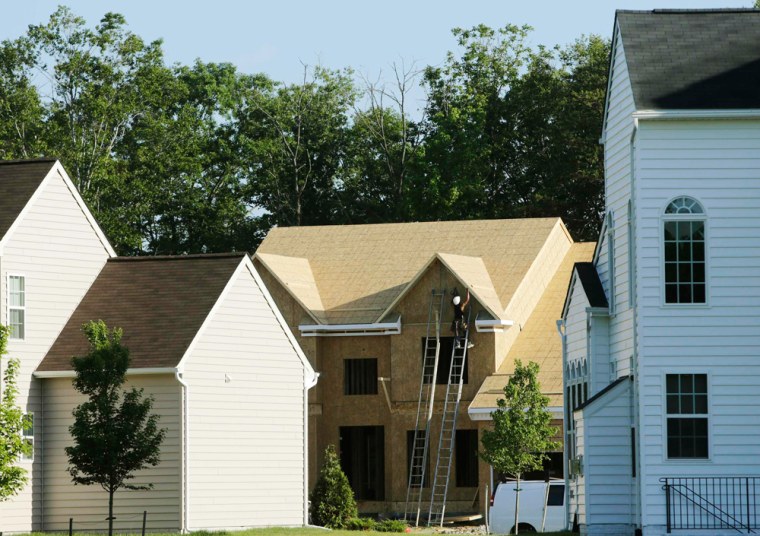Where have all the carpenters gone? Home builders across the United States are scratching their heads for an answer as they struggle to assemble crews to keep up with growing demand.
In some parts of the country, the shortage of skilled carpenters - especially framers - is so bad that builders cannot get projects off the ground and it is taking as much as two months longer than normal to complete a project.
"Right now I have framing material sitting on the job site with the foundation on the ground," said Stephen Paul, executive vice president at Mid-Atlantic Builders in Rockville, Maryland. "It's been sitting there a week because I have not been able to get a framer to start the house."
According to a National Association of Home Builders survey published last month, 48 percent of single-family home builders could not find framing crews in the first three months of this year, and builders in all four regions struggled. In the middle of last year, that figure stood at just 30 percent.
The demand for labor has been driven by the decisive recovery the housing sector is finally mounting.
According to industry figures released on Monday, a majority of U.S. homebuilders view conditions for new construction as favorable for the first time since the housing crisis began seven years ago, and home prices have been climbing.
To be sure, it's hard to explain a labor shortage when unemployment in the sector is over 10 percent, and some argue that builders just need to pay more.
Still, a labor shortage and pricey materials may hold back new home construction and help push prices higher as demand outstrips supply, realtors and economists say.
Government data on Tuesday showed housing starts rose less than expected in May, an indication that supply constraints might be starting to impact on home building. Builders say costs have risen between 10 percent and 15 percent over the last year.
Although the nation's unemployment rate stands at a lofty 7.6 percent, and is much higher in construction, builders say that is not translating into the availability of framers - the carpenters with mid-level skills who create the skeletal wooden framework of new houses and who serve as the backbone of home construction.
And it is not only framers who are in short supply, according to builders. The dearth extends to roofers, masons, sheet rockers, electricians and air conditioning technicians, and it is affecting apartment building contractors as well as homebuilders.
"Although we are very busy and have work lined up for the next 12 to 18 months, we could be busier if I was confident that I could obtain the proper help," said Anthony Zarrilli, principal at Zarrilli Homes in Brick, New Jersey.
When the housing market collapsed in 2006, contractors downsized and the industry continued to shrink well after the recession ended. Between April 2006 and January 2011, the home-building sector shed 466,700 jobs, about half of its total.
NOT GOING BACK
Now, builders are trying to meet the recovering demand, but many of the workers they let go are no longer available.
Given the industry's volatility, many, like Omar Lisak, will probably never come back.
The 46-year-old from Lincoln, Nebraska, left in May 2008 after an 18-year career as a framer. He is now a truck driver.
"I need something less risky. People are offering me jobs, they want me to go back, but I won't," said Lisak. "I have no need to. I am working with no stress, less headaches and I sleep well at night and don't have to worry about paying my bills."
Similar sentiments are shared by Fernando Pages and Pat Quinn, who also quit after decades of building homes.
Pages, 57, has moved into telecommunications and also teaches home-building classes and writes a blog.
"It was a terrible experience to want to go through again. Right now I am driving to Kansas, where I will teach an eight-hour class tomorrow on foundations," said Pages.
After frequent bouts of unemployment, the 57-year-old Quinn called it quits in 2012 and became a home inspector in St. Augustine, Florida, ending a 30-year career building homes.
"I was always getting laid off every year," said Quinn. "I would never consider going back even if things get much better in the housing market."
More business news:
